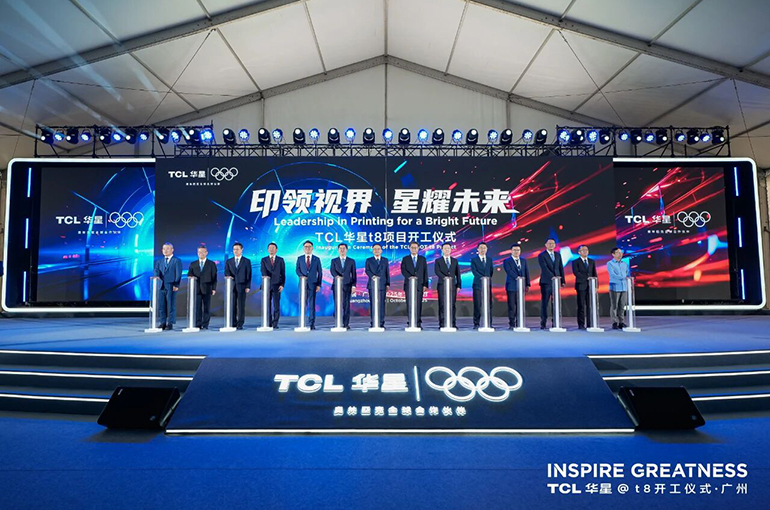Select Language:
On October 22, TCL China Star Optoelectronics Technology, a leading manufacturer of liquid crystal displays, announced the commencement of construction on the world’s first large-scale 8.6-generation printed organic light-emitting diode (OLED) display panel facility.
The new factory, situated in Guangzhou, is the first globally capable of mass-producing 8.6-generation printed OLED panels. The project’s construction is projected to take approximately 24 months.
In mid-September, the company revealed plans to invest around 29.5 billion yuan (approximately $4.1 billion USD) to develop this advanced 8.6-generation printed OLED production plant, which will have a monthly capacity of about 22,500 glass substrates measuring 2,290 by 2,620 millimeters.
Full-scale production is anticipated to commence in the latter half of 2027. The initial products are expected to target the mid-sized high-end OLED market, with some downstream clients already incorporating these panels into their upcoming designs, said the company’s CEO.
Typically, high-generation display projects have a return period of five to seven years; however, due to the competitiveness and advantages of these products, the new plant is expected to recover its investment in a shorter timeframe.
The CEO highlighted that the project would foster the growth of upstream and downstream enterprises, including raw material suppliers and specialized equipment providers, in Guangzhou. Several leading international material and equipment suppliers have committed to collaborating with the company to help establish a robust domestic supply chain.
The first phase of the project aims for at least a 50% localization rate of production equipment, with plans to enhance this in subsequent phases to cultivate an integrated supply chain ecosystem centered around the new facility.
Compared to traditional OLED panels, printed OLEDs offer several benefits, such as superior color accuracy, higher resolution, better material efficiency, and lower energy consumption, manufacturing, and investment costs. They are also well-suited for large-scale commercial deployment of full-size OLED displays.
As global production capacity for liquid crystal displays is increasingly dominated by Chinese manufacturers, companies like this are emphasizing the expansion of OLED panel production capabilities.
According to industry data, Chinese OLED panel manufacturers hold approximately 46% of the global market share, with South Korean companies accounting for the remaining 54%.
The company operates as a joint venture controlled by TCL Technology, holding nearly an 82% stake. Samsung Display owns just over 10%.
The company has 11 display panel production lines and six module assembly plants across five Chinese cities, as well as facilities in India and Vietnam. Notably, a 5.5-generation printed OLED plant in Wuhan has already entered production.







